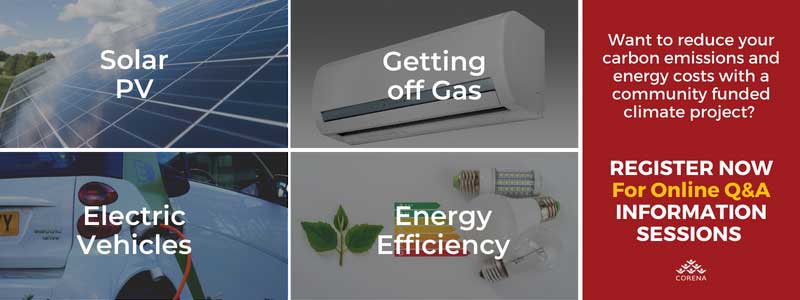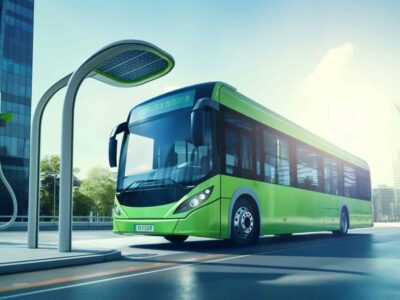Updated: December 2024
As the world increasingly takes action to tackle the climate emergency, one technology set to make a massive difference in the amount of carbon emissions released into the atmosphere is that of electric vehicles.
Thanks to green energy innovations and emerging renewable technologies, electric vehicles have also come a long way over the last few years, with several competing companies coming out with variations on design, leading to ever-increasing energy efficiency and reduced emissions for the transportation sector.
Most people think primarily of passenger vehicles or commercial electric vehicles for organisations. However, a number of other types of electric vehicles are being introduced in other industries that will soon become commonplace, transforming the way businesses across various sectors operate.
Let’s review some of the different types of electric vehicle technologies that exist in various industries.
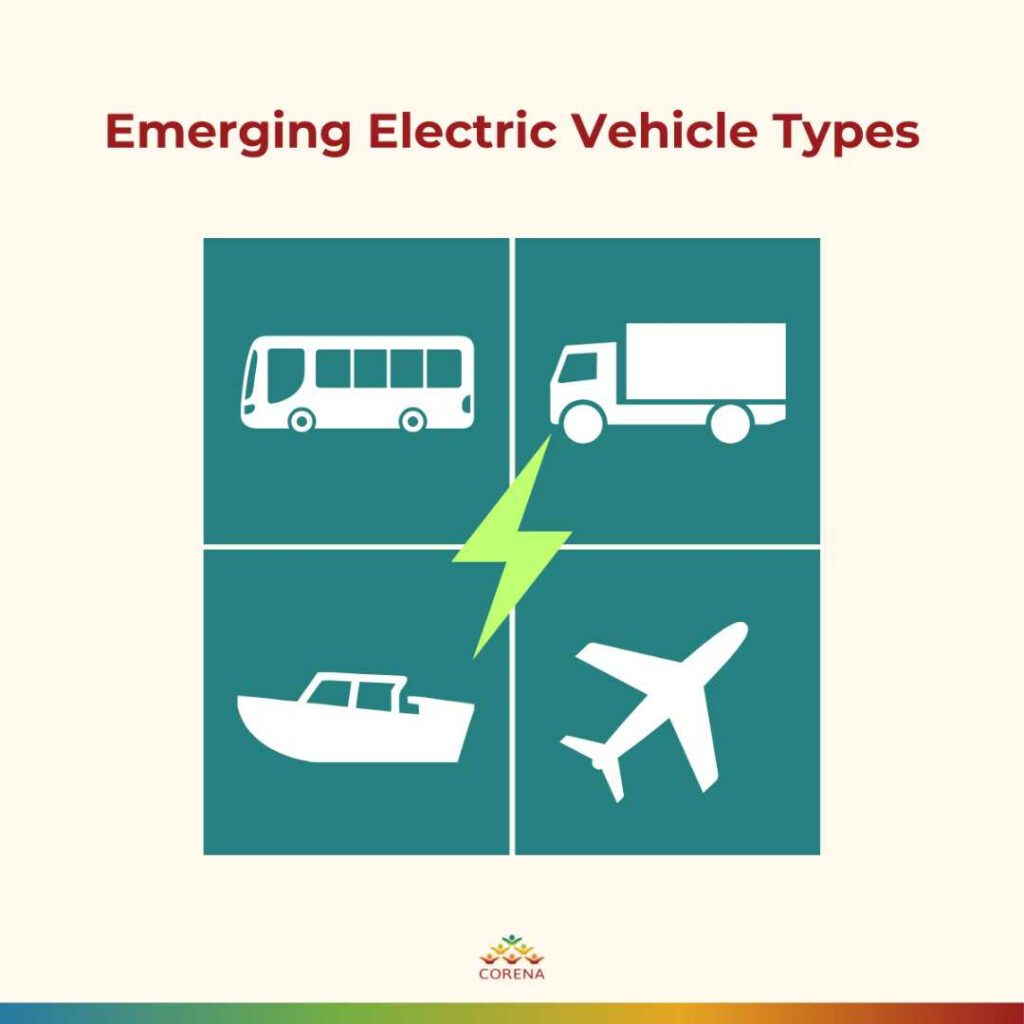
Electric Buses
The public transportation sector is evolving to become more energy-efficient, thanks to the introduction of electric buses. These buses will help reduce emissions and improve the overall sustainability of public transport.
Electric buses use advanced battery technologies, mostly lithium-ion, as these provide sufficient range and efficiency.
One of the major developments still needed for electric bus technology to take off is the widespread installation of efficient charging infrastructure. However, more and more governments and corporations are investing in this type of infrastructure, which is growing yearly.
In addition to their energy efficiency, electric buses often incorporate advanced systems such as autonomous driving features, enhancing safety and efficiency.
Manufacturers such as Volvo, Mercedes-Benz and Proterra are at the forefront of producing electric buses worldwide. In the Australian market, companies like Scania, Nexport and Custom Denning are leading the way by introducing electric buses in the last year.
Australia’s oldest bus maker, Custom Denning, is manufacturing the Element, an all-electric 45-seat bus that can travel up to 500kms on a single charge.

Electric Trucks & Other Heavy Equipment
Electric trucks and other types of heavy equipment are also gaining popularity in the freight and logistics sector, as well as mining, construction, and even emergency services.
They offer a much cleaner alternative to what were traditionally diesel-powered trucks. Diesel-powered trucks and heavy equipment are notorious for their heavy emissions. Electric alternatives are a godsend for industries that desperately want to reduce their carbon footprint while also lowering their operating costs.
For a long time, it wasn’t possible to power such large machinery using electricity alone. However, significant advancements in battery and powertrain technologies have allowed for the development of innovative electric trucks and other heavy equipment that are now suitable for various heavy-duty applications.
Electric Truck Developments
One of the challenges the electric truck development space faces is the ongoing need for electric trucks to have long-haul capabilities. However, challenges related to their range and the availability of charging infrastructure for cross-country transportation are being addressed, with governments playing a pivotal role in supporting the development and installation of this kind of infrastructure.
In fact, reports have now shown that the development of electric vehicle charging infrastructure is happening faster than electric vehicles.
To help facilitate the uptake of electric trucks in Australia, renewable energy start-up NewVolt plans to set up a heavy electric vehicle charging network along the east coast of the country. This will not only help in the decarbonisation of the nation’s major road freight routes but also potentially save billions of dollars spent on importing fossil fuel diesel each year.
In terms of short-range battery-powered electric heavy vehicle technologies, construction and mining sites are already starting to reap the benefits of using these types of equipment to reduce emissions.
In addition to their energy efficiency, electric trucks often feature automation, allowing for a much more efficient site and lowering the risk of injury to on-site personnel.
Daimler, Nikola Motors, Sandvik, Komatsu, and Tesla are some of the key companies leading the development and production of electric trucks and heavy equipment, both in Australia and elsewhere around the globe, with more on the horizon every day.
Holcim is conducting a six-month trial of the e-Auman C electric concrete truck in Australia as part of its efforts to deliver a lower carbon profit. Made by Foton Mobility, this heavy-duty electric vehicle will be put to the test and subject to extreme conditions at a remote mining site near Port Hedland in Western Australia.
Growth of electric truck adoption in Australia is accelerating, with two major trucking companies, Linfox and Toll Holdings, receiving government grants to deploy 54 new electric trucks. This highlights the increasing viability of electric trucks for heavy-duty transport and the role of government support (in the short-term, while purchase prices are higher) in accelerating their uptake.
Construction & Mining
In terms of short-range battery-powered electric heavy vehicle technologies, construction and mining sites are already starting to reap the benefits of using these types of equipment to reduce emissions.
Acciona’s use of Australia’s first fully-electric drill rig in a local project, showcases the growing adoption of electric equipment in the construction industry. The drill rig offers reduced emissions and noise pollution compared to traditional diesel models, contributing to a more sustainable and environmentally friendly construction process.
Komatsu’s launch of a massive 400-ton electric mining excavator, is a key development in the electrification trend in heavy machinery. The excavator offers significant reductions in emissions and noise pollution compared to traditional diesel models.
Fortescue also plans to replace diesel excavators with electric models, further electrifying its mining operations and significantly reducing diesel consumption. Recently, they reached a milestone of moving one million tonnes of material, exceeding the performance of its diesel counterparts. This achievement demonstrates the operational efficiency and environmental benefits of electric heavy machinery in the mining industry, further supporting the transition to electric fleets.
Another project is Fortescue’s deployment of a 6MW electric vehicle charger, the largest in the world, to power its electric mining fleet. This demonstrates the company’s commitment to decarbonising its operations and investing in cutting-edge technology. The charger’s capacity and efficiency underscore the potential for rapid charging solutions to support the transition to electric vehicles in heavy industries. Both these revolutionary initiatives highlight the company’s commitment to sustainability and its role in leading the transition to electric heavy machinery in the mining sector.
All these rollouts signify a major step towards decarbonising the trucking, construction, and mining industries in Australia and improving operational efficiency across the board.
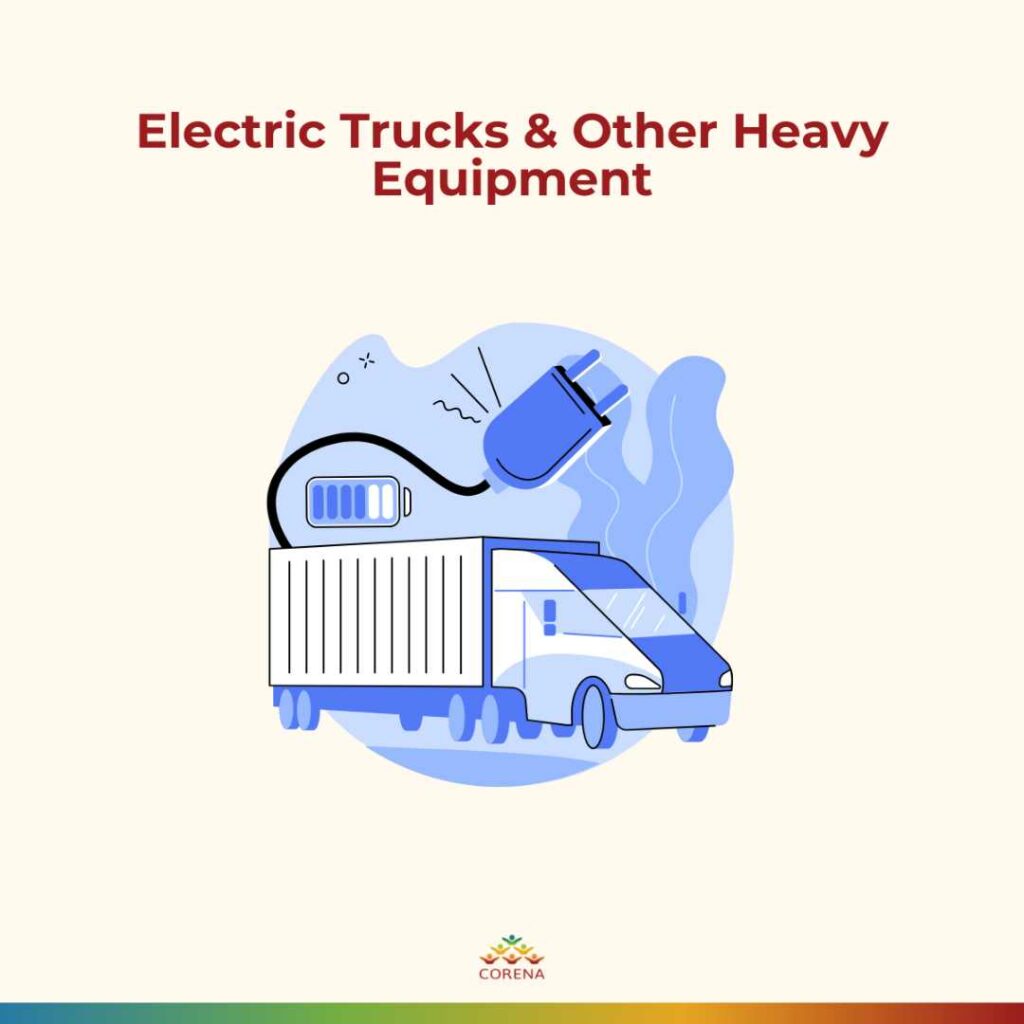
Electric Boats & Ferries
The maritime transport industry has traditionally relied on fossil fuels to power its boats and ships. However, the introduction of electric-powered waterborne vessels is set to reduce the carbon emissions produced by the sector and its environmental impact.
For battery technology to work effectively on the water, it has to be adapted specifically for this purpose, owing to the unique challenges of waterborne transport. This includes ensuring buoyancy and combating corrosion.
Smaller electric boats are a more environmentally friendly means of moving people and cargo across local waterways, and they are particularly appealing in cities where they can significantly reduce pollution and noise.
Still, the lack of a charging infrastructure at sea makes developing sustainable battery-powered water transportation technology for long-distance vessels difficult. However, one of the solutions put forward is to carry spare batteries on board a ship and swap them out along the way. These will then be recharged upon arrival in port.
In addition to the energy efficiency of electric-powered boats and ferries, many of them incorporate autonomous features, leading to enhanced safety and operational efficiency.
Various companies are involved in developing electric boat technology, such as Torqueedo, Duffy Electric Boats, and X Shore.
The arrival of Candela’s C-8 hydrofoiling electric boat, is a game changer thanks to its innovative design and sustainable performance. The boat’s hydrofoil technology allows it to lift out of the water, reducing drag and increasing efficiency. This technology represents a new era of electric boating, offering both environmental benefits and a unique, exhilarating experience.
Vessev’s electric hydrofoil boat designed for tourist excursions, offers both a smooth and efficient operation for sightseeing. The boat’s hydrofoil technology minimises wave impact and maximizes energy efficiency, providing a comfortable and sustainable way to explore waterways. This innovation highlights the potential of electric hydrofoils to transform water tourism and reduce environmental impact.
In Australia, Incat Tasmania is building the world’s largest all-electric ship at its facility in Hobart. The 130-metre-long vessel will hold a 40 MWh battery energy storage system which powers a series of electric propulsion system and waterjets.
China has launched the world’s largest electric container ship, powered by a massive 50 MWh battery. This development signifies a major step towards decarbonising the shipping industry and reducing reliance on fossil fuels. The ship’s capacity and range demonstrate the growing feasibility of electric propulsion for large cargo vessels.To help moor giants like these, Hai-Sea Marine has also released the world’s first all-electric tugboat, a development of which has the potential to significantly reduce emissions and noise pollution in ports and harbours if adopted on a large scale. The tugboat’s successful operation demonstrates the viability of electric propulsion for workboats and its potential to improve air quality and sustainability in maritime operations.
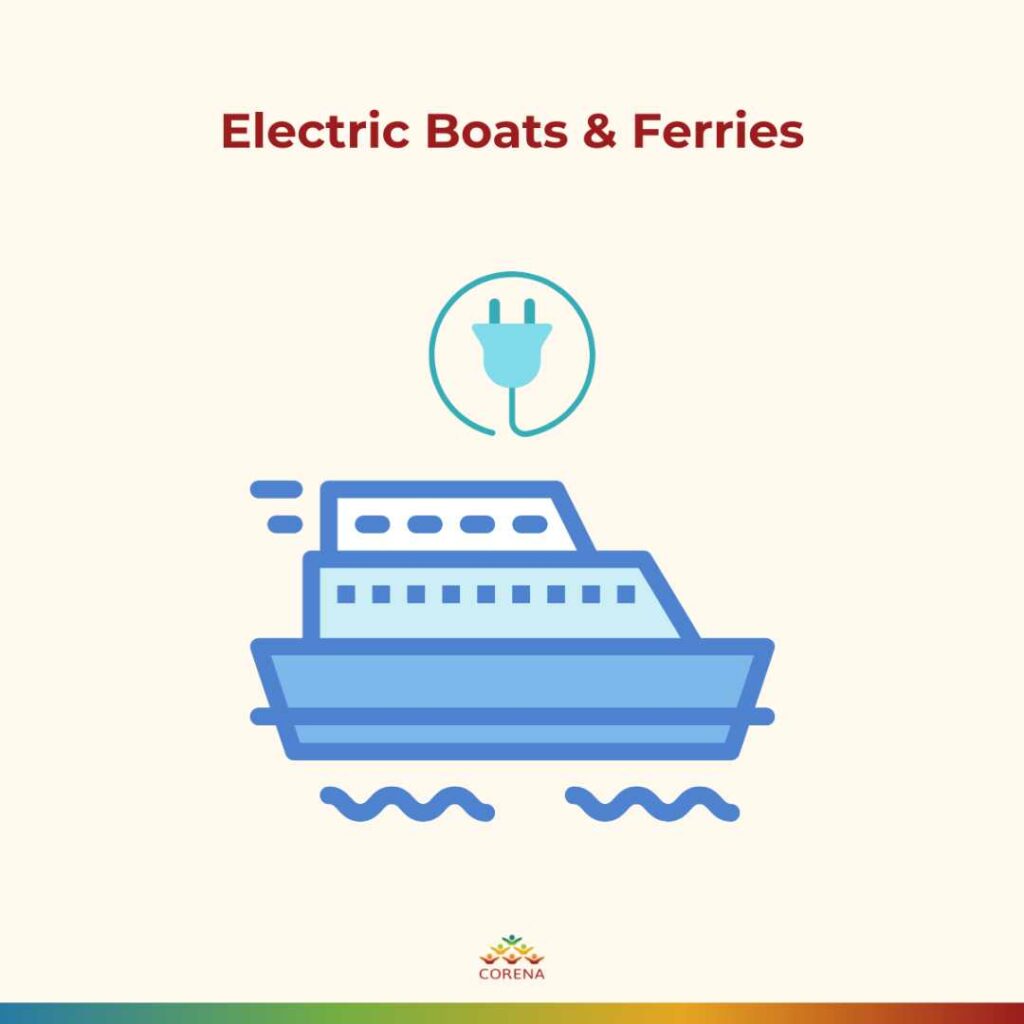
Electric Planes
The development of electric planes is gaining traction and is set to revolutionise air travel by producing lower emissions and reducing the aviation sector’s dependence on fossil fuels. This burgeoning field is still undergoing trials and testing owing to the need to develop lightweight yet energy-dense batteries that are safe on both short and long flights.
This is a key challenge in the electric aviation sector because these batteries need to achieve the necessary range and efficiency in a safe manner. Short-haul electric planes are currently available. However, there is still a long way to go to develop electric planes that can travel long distances safely.
The significant emission reductions that electric planes would facilitate would make it a welcome technological development in the aviation industry, which is under increasing pressure to adopt more sustainable practices.
Various aviation companies, startups and research institutions are working together to drive innovation in electric planes and achieve the kind of technology that could transform the sector.
FlyOnE is facilitating the early installation Australia’s first electric aviation charge network and the world’s first recreational eVTOL network in multiple states to support the use of the Pipistrel Alpha Electro, and Velis Electro ahead of the 2025 release of the Air ONE EVTOL electric aircraft and other future release aircraft such as the Diamond eDA40, Joby, Vertiia, Electron 5 and more.
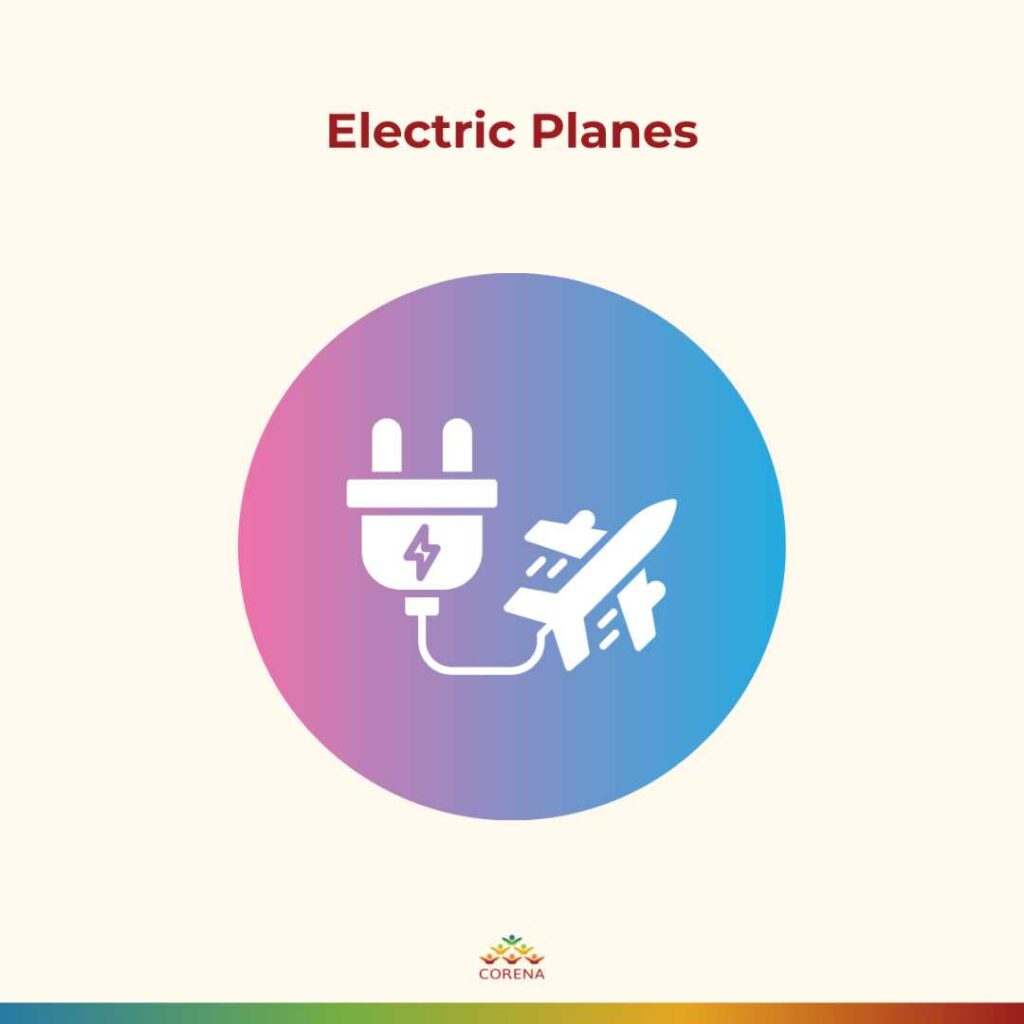
ICE To Electric Vehicle Conversions
An emerging electric vehicle innovation is the trend to extend the lifespan of existing vehicles by converting traditional internal combustion engines (ICE) to electric vehicles. While a variety of conversion kits are available on the market, there are challenges in adapting various vehicle structures and managing the weight distribution to ensure that safety standards are maintained.
By converting an ICE vehicle to an electric vehicle, one can reduce the overall carbon footprint of the vehicle and ensure a more efficient and environmentally friendly transportation solution.
The regulatory landscape surrounding retrofitted electric vehicles is evolving, with governments stepping in to address safety standards and emissions regulations. At this stage, conversions are still a growing technology, with more efficient solutions being developed all the time.
One of the most obvious benefits of converting ICE vehicles to electric vehicles is that old vehicles can be repurposed and given a new lease on life. This would contribute to a more sustainable transportation sector by minimising the environmental impact associated with the manufacture of new electric vehicles.
In Australia, Jaunt Motors will soon be offering a range of high capacity ICE vehicle conversions. While, Roev provides electric conversions of the Toyota Hilux, one of the country’s most widely used utility vehicles. Equipped with 4WD capability and a 340km driving range, the electric Hilux is a multi-purpose working ute suitable for many types of commercial fleets.

Electric Vehicles Funding For Non-Profit, Community Organisations & Social Enterprises
While the above vehicles are not used by typical not for profits it goes to show that battery capacity and range are advancing to the point where they can meet a large variety of use cases including the transportation needs of most non profits. If you are a non-profit, get in contact if you would like to chat about how they might work for you.
Here at CORENA, we receive, record, and transparently report voluntary donations and contributions from the public. We use that money to give interest-free loans to fund non profits to adopt:
- Electric Vehicles
- Solar Panels (Can be used to charge electric vehicles)
- Energy Efficiency
- Getting Off Gas – Replacement of fossil gas appliances with electric alternatives
- A combination of the above
We actively support the adoption of electric vehicles and provide interest-free loans to eligible organisations. You don’t pay any interest on your CORENA loan, and the quarterly loan repayments are set to be a little less than the savings on your operating costs averaged over a year. This means you are never out of pocket, even though your overall energy cost savings may not be so large in the short-term. However, after your loan is fully repaid you reap the full financial benefit of having lower operating costs.
To learn more, check out how to apply for a project loan, or register for one of our upcoming Online Q&A Information Sessions.
